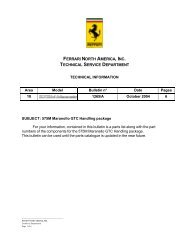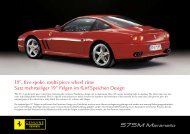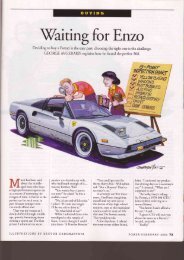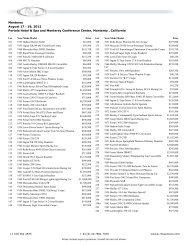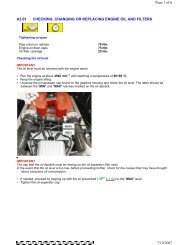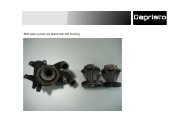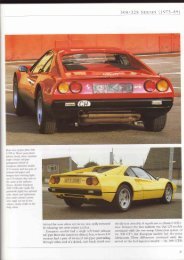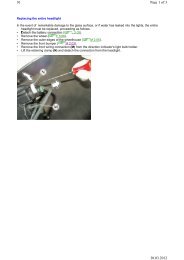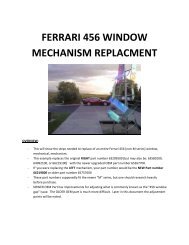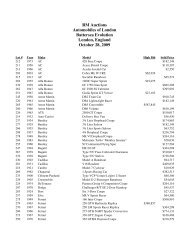Ferrari 308 Buyer's Guide - Ferrari Life
Ferrari 308 Buyer's Guide - Ferrari Life
Ferrari 308 Buyer's Guide - Ferrari Life
Create successful ePaper yourself
Turn your PDF publications into a flip-book with our unique Google optimized e-Paper software.
A Rosso Corsa <strong>308</strong> GTS (le�) and a Blu Chiaro <strong>308</strong> GTB (right). The <strong>308</strong> has a timeless design<br />
<strong>308</strong> GTBi/GTSi (1980-1983)<br />
The “i” series introduced<br />
several major changes to the <strong>308</strong>.<br />
Most significantly, the weber carbs<br />
were dropped in favor of Bosch K<br />
Jetronic fuel injection. Marelli electronic<br />
ignition was also adopted<br />
and an air pump added. Together<br />
these changes delivered a much<br />
smother and cleaner running engine<br />
which more easily meet ever<br />
increasing emission standards.<br />
On the negative, the “i” series lost<br />
30 bhp, with US cars delivering<br />
a un-<strong>Ferrari</strong> like 205 bhp at 6600<br />
rpm. All “i” series cars used a<br />
wet sump lubrication system and<br />
had a reputation for consuming<br />
large amounts of oil. Twin exhaust<br />
pipes were fi�ed to both US and<br />
European models at this point. A<br />
redesigned, lighter clutch was also<br />
fi�ed. With the addition of fuel<br />
injection and the lighter clutch, the<br />
“i” series was a less demanding car<br />
than the original. Several changes<br />
were made to the instrument panel<br />
with the gauges being rearranged<br />
to provide be�er visibility. The<br />
seats were also modified to increase<br />
lateral support and larger<br />
metric wheels were fi�ed.<br />
Vehicle performance under<br />
emission constraints was clearly<br />
an issue recognized by <strong>Ferrari</strong> and<br />
significant advancements were<br />
made to address this through the<br />
remainder of the model series.<br />
<strong>308</strong> GTB QV/GTS QV (1983-1985)<br />
The first major power boost<br />
was made through the introduction<br />
of the “qua�rovalvole” 4-valve<br />
per cylinder engine in 1983. The<br />
“QV” retained the 3 litre block of<br />
the <strong>308</strong> “i” but added 2 valves and<br />
moved from iron to Nikasil faced<br />
cylinder liners. All this resulted in<br />
increased output to a more <strong>Ferrari</strong><br />
like 240 bhp at 7000 rpm. The<br />
ignition was upgraded to Marelli<br />
3 0 8 B u y e r ’ s G u i d e<br />
Digiplex.<br />
Although in appearance the<br />
QV resembled the pervious model,<br />
<strong>Ferrari</strong> incorporated numerous<br />
improvements to systems and interior.<br />
These included a reworked<br />
console, and a new Momo steering<br />
wheel design. Apart from the<br />
badging, the model is identified by<br />
the prominent red-finished alloy<br />
intake plenum with emblazoned<br />
“Quatrovalvole”, driving lights<br />
mounted in the front grill, and a<br />
small spoiler mounted between<br />
the two sail panels behind the roof,<br />
like the 12 cylinder Boxers. Twin<br />
side mirrors were also now standard<br />
and sported the <strong>Ferrari</strong> shield<br />
on the front cone. Late QV’s also<br />
received rust proofing for the first<br />
time. The GTS outsold the GTB by<br />
4 to 1.<br />
<strong>Ferrari</strong> Forum 3



